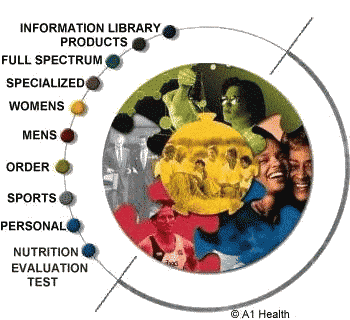COLLOIDAL MINERALS
MOLYBDENUM
Molybdenum (Mo) is an essential nutrient for animals and humans. Tissue content
of molybdenum is low, with the highest concentrations in the liver, kidney,
adrenal gland and bone. It is a component of a number of enzymes, including
sulfite oxidase (involved in the metabolism of sulfur amino acids), xanthine
oxidase (involved in the oxidation of purines and pyrimidines and the production
of uric acid), and aldehyde oxidase (involved in the oxidation of aldehydes).
These enzymes share a common "molybdenum cofactor."
Deficiencies: Molybdenum deficiency is extremely rare and has only
been identified in the presence of other serious disorders. Metabolic defects
in the molybdenum cofactor are characterized by the absence of the three molybdoenzymes.
Both the deficiency and the metabolic disorders are accompanied by abnormal
excretion of sulfur metabolites, low uric acid concentrations, and elevated
hypoxanthine and xanthine excretion. The absence of sulfite oxidase in the metabolic
disorder leads to death at an early age.
Diet recommendations: The Estimated Safe and Adequate Dietary Intakes
of molybdenum are:
|
Age (years) |
µg/day |
| Infants |
0-0.5 |
15-30 |
|
0.5-1 |
20-40 |
| Children and adolescents |
1-3 |
25-50 |
|
4-6 |
30-75 |
|
7-10 |
50-150 |
|
11+ |
75-250 |
| Adults |
|
75-250 |
This range is based on the usual dietary intake, about 75 to 240 µg/day by
adults. The range was extrapolated for other age groups on the basis of body
weight.
Food sources: Rich sources of molybdenum include legumes, cereal products,
and leafy vegetables. The amount in foods depends on the soil molybdenum content.
Molybdenum is very well absorbed, but its bioavailability may be affected by
some food components.
Toxicity: Molybdenum toxicity is much more likely than deficiency.
Toxicity is common in cattle grazing in pastures with high molybdenum soil.
A high incidence of gout has been reported in humans with intakes of 10-15 mg/day.
Recent research: Controlled studies in humans suggest that the molybdenum
requirement is well below the usual dietary intake, which is consistent with
lack of molybdenum deficiency in the U.S. population. Bioavailability studies
suggest that molybdenum is less well absorbed from soy products than from leafy
vegetables.
For further information:
Turnlund, J.R., Keyes, W.R. & Peiffer, G.L. (1995) Molybdenum absorption,
excretion, and retention studied with stable isotopes in young men at five intakes
of dietary molybdenum. Am. J. Clin. Nutr. 62: 790796
Rajagopalan, K.V. (1988) Molybdenum: an essential trace element in human
nutrition. Ann. Rev. Nutr. 8: 401427.
RELATED ARTICLES
 ANALYSIS OF COLLOIDAL MINERAL ANALYSIS OF COLLOIDAL MINERAL
 Toddy :Original
Plant Derived Colloidal Minerals Toddy :Original
Plant Derived Colloidal Minerals
 Is it true
that other companies are selling the same minerals in a more concentrated form. Is it true
that other companies are selling the same minerals in a more concentrated form.
 POTASSIUM ? POTASSIUM ?
 CHROMIUM
? CHROMIUM
?
 BIO CALCIUM BIO CALCIUM
 Specialized
Nutrition Specialized
Nutrition
 CHEMISTRY'S
MIRACULOUS COLLOIDS CHEMISTRY'S
MIRACULOUS COLLOIDS
 Nutrition
Colloidal Minerals: Nutrition
Colloidal Minerals:
 Sports and
Fitness Products Sports and
Fitness Products
 Sports food Sports food
 CALCIUM CALCIUM
 SELENIUM
MAY HELP PREVENT CERTAIN TYPES OF CANCER SELENIUM
MAY HELP PREVENT CERTAIN TYPES OF CANCER
 REQUEST YOUR FREE EAGLE PRODUCT INFORMATION PACK: INFOPACK@eagle-min.com REQUEST YOUR FREE EAGLE PRODUCT INFORMATION PACK: INFOPACK@eagle-min.com

Information Library|
Products|Full Spectrum|Specialized|Womens|Mens|Order|Sports|Personal|
INDEPENDENT
SupraLife Distributor
For personal service Call:
A1 Health
TOLL FREE ORDER EXPRESS HOT LINE :888-441-4184
9 AM Till 7PM EST

e-mail: info@colloidal-min.com
|
